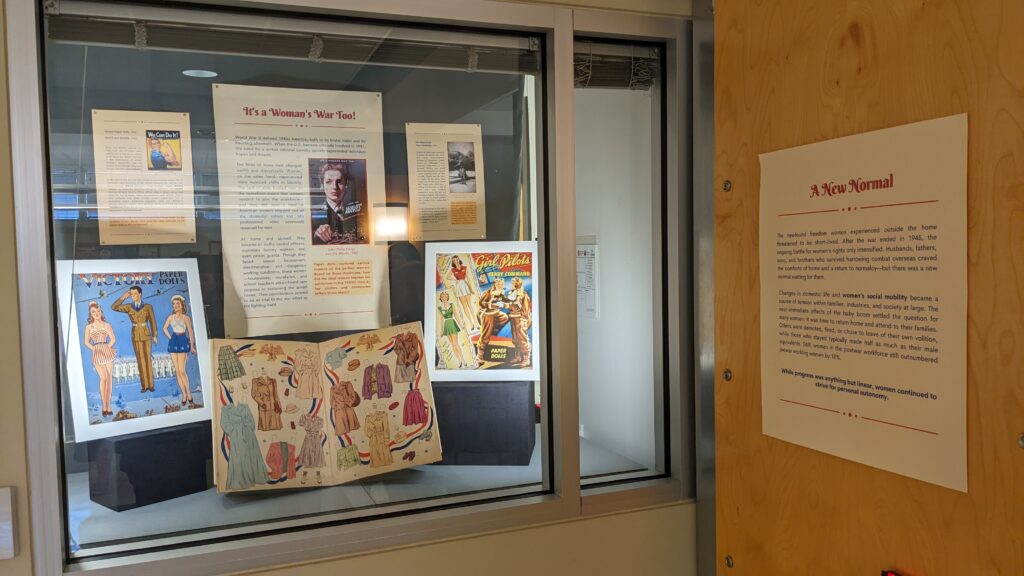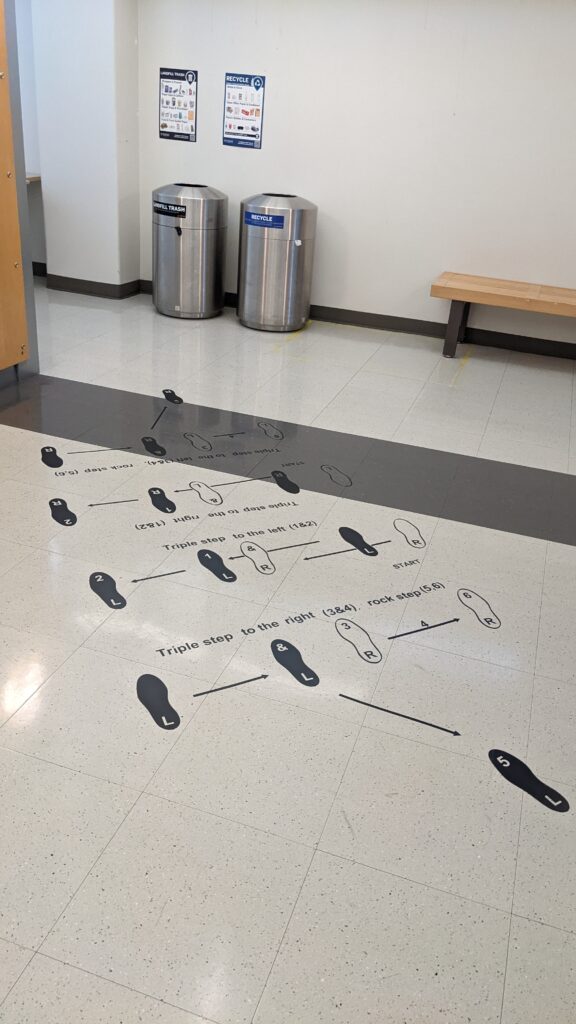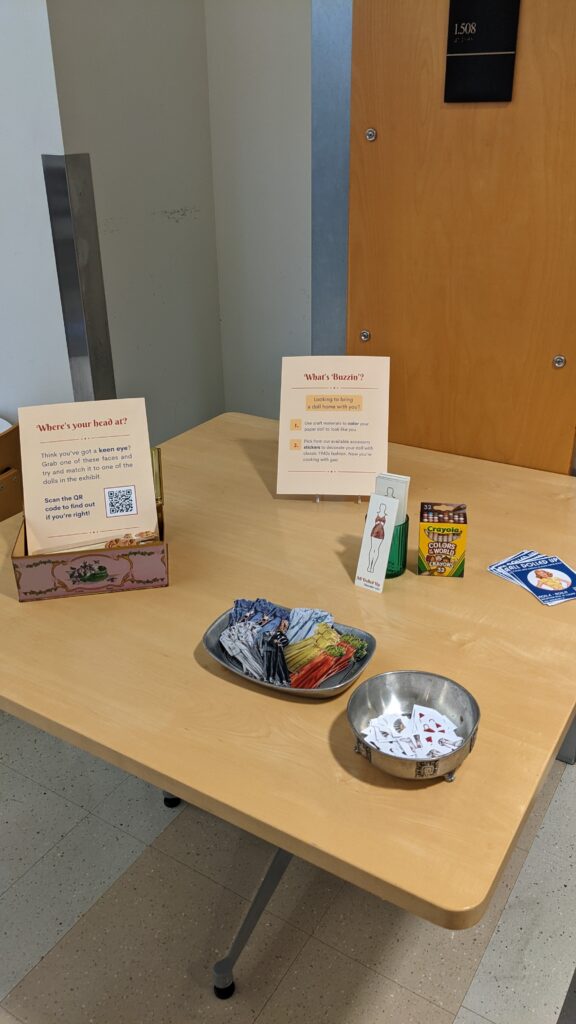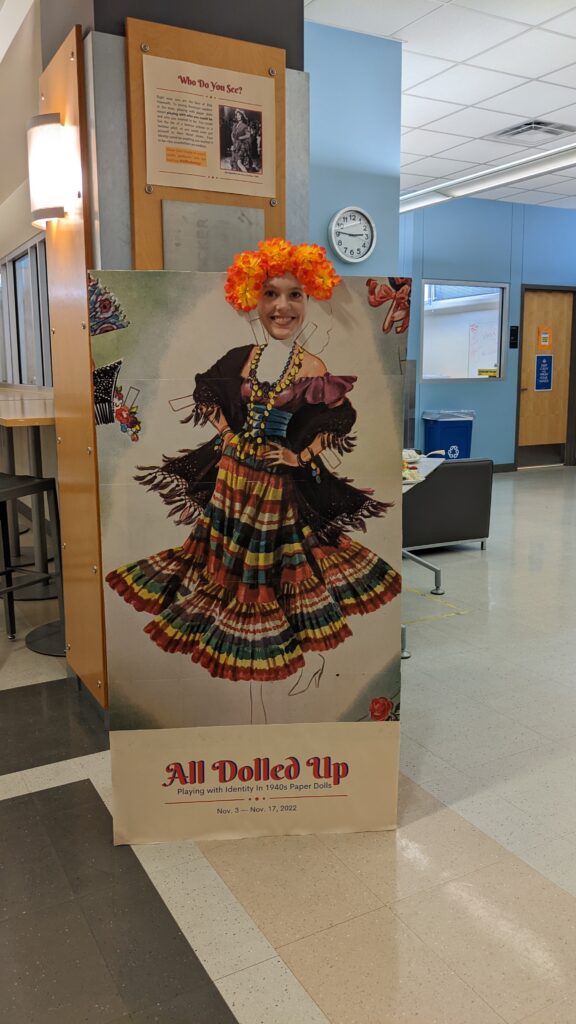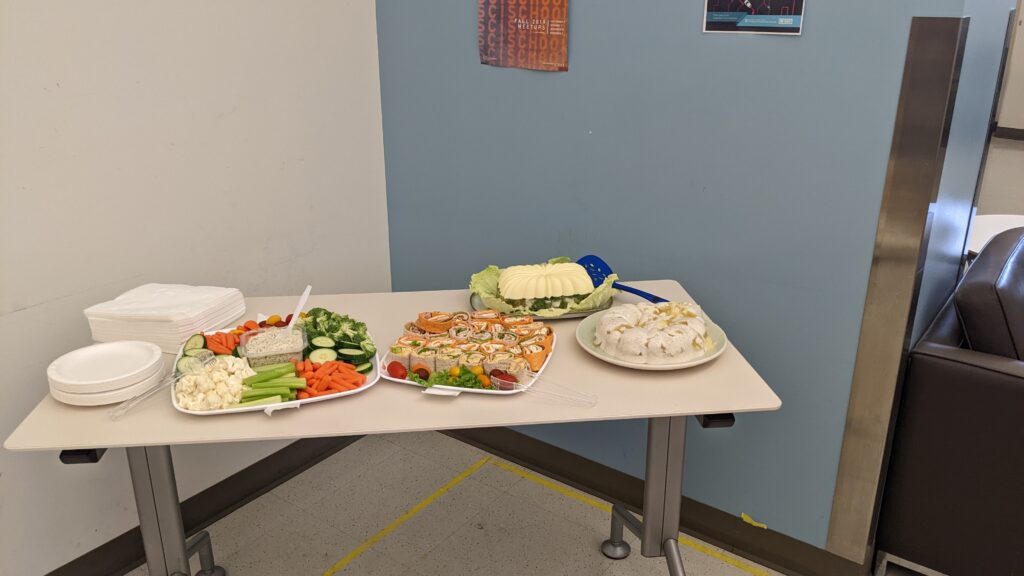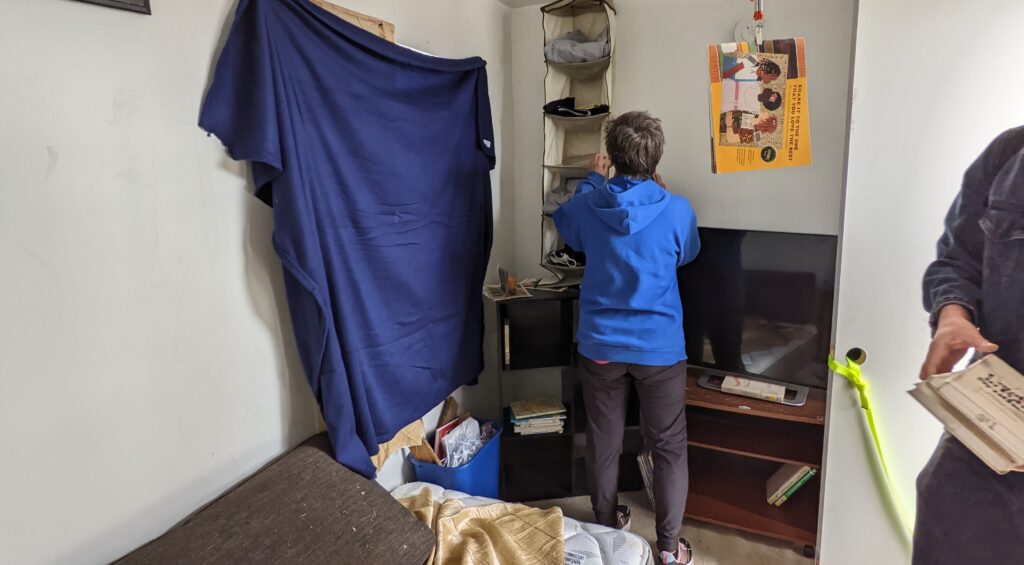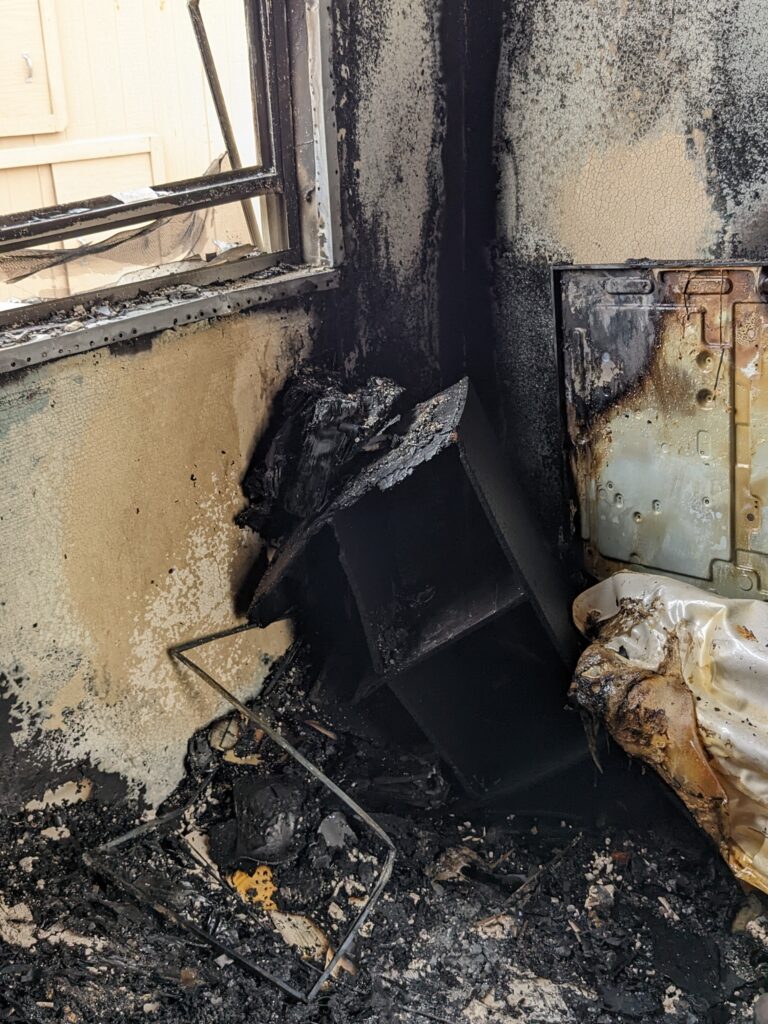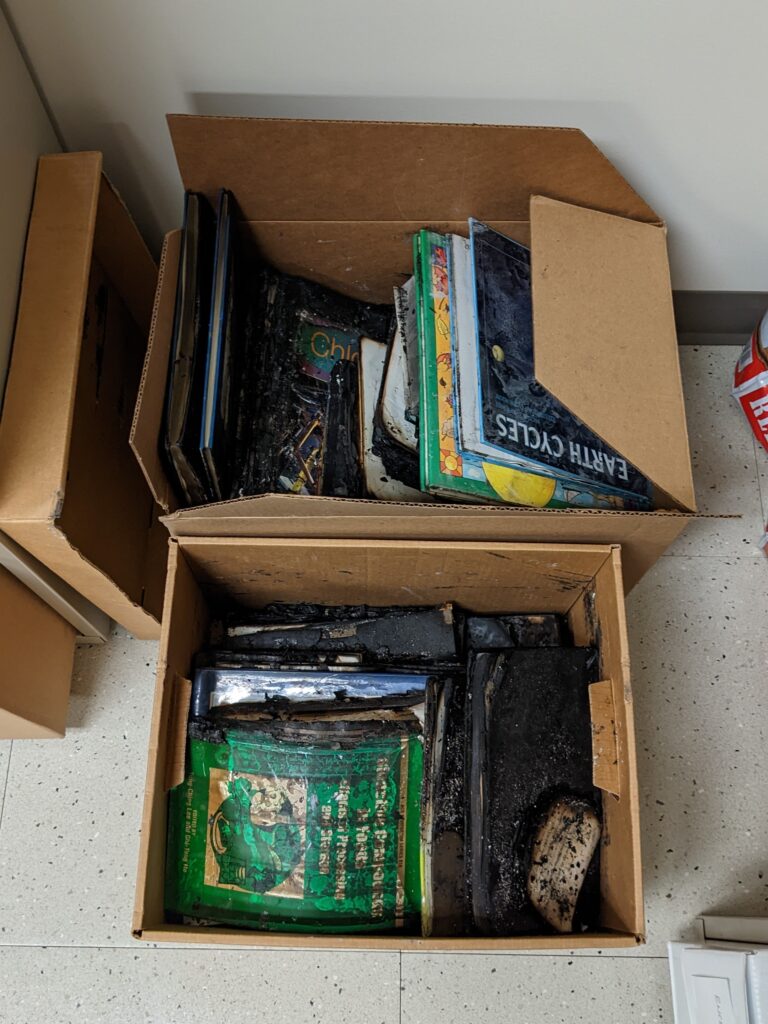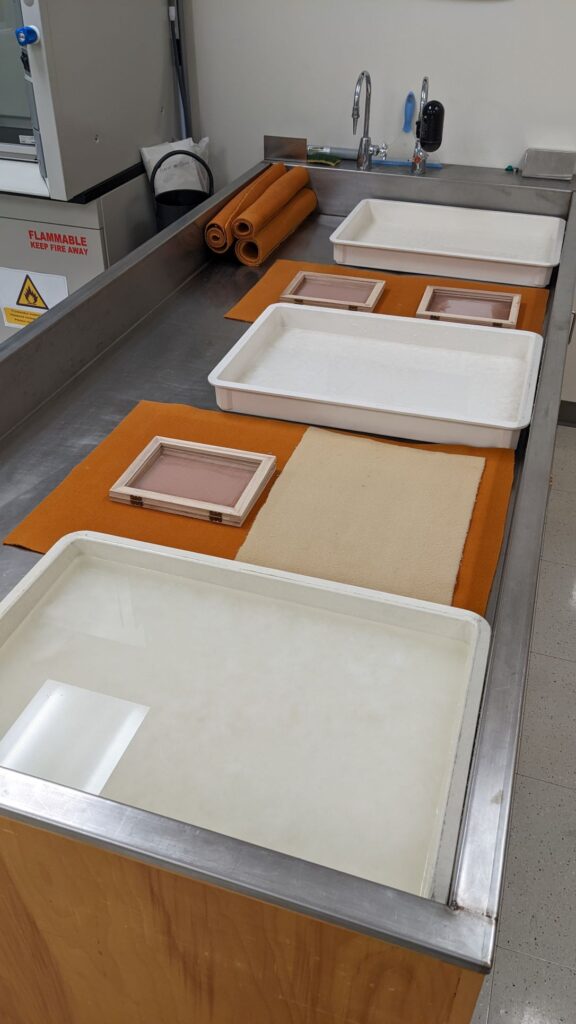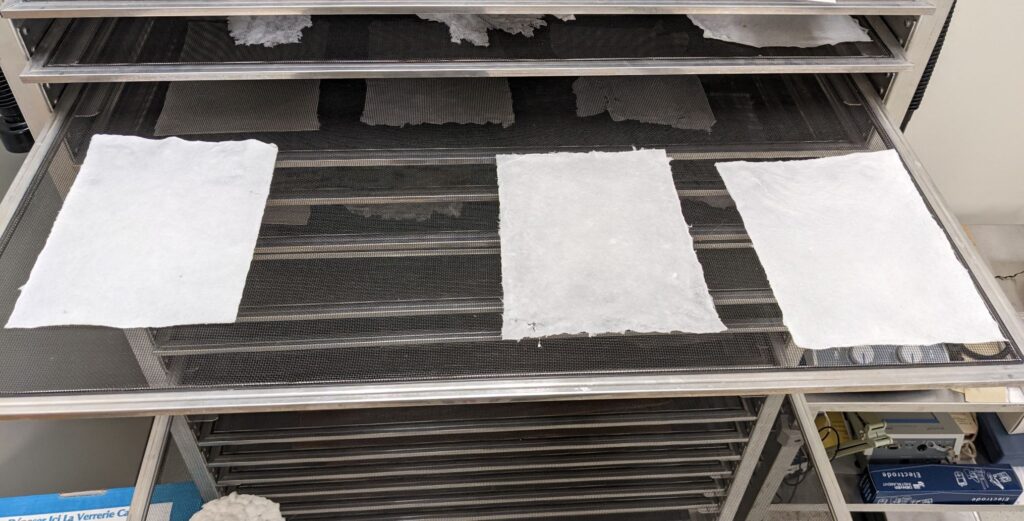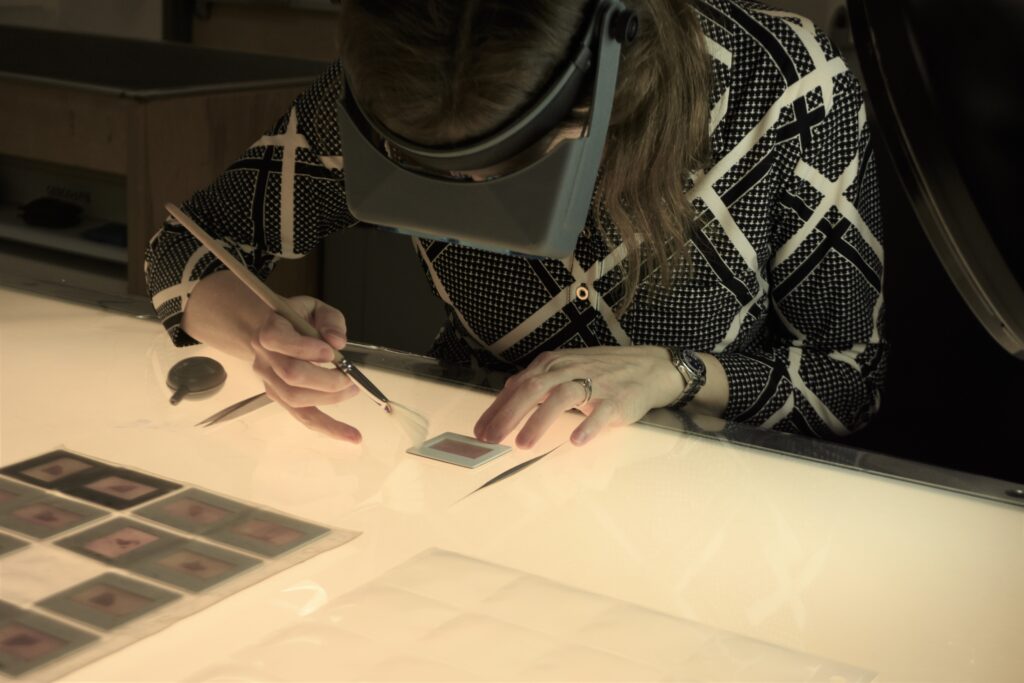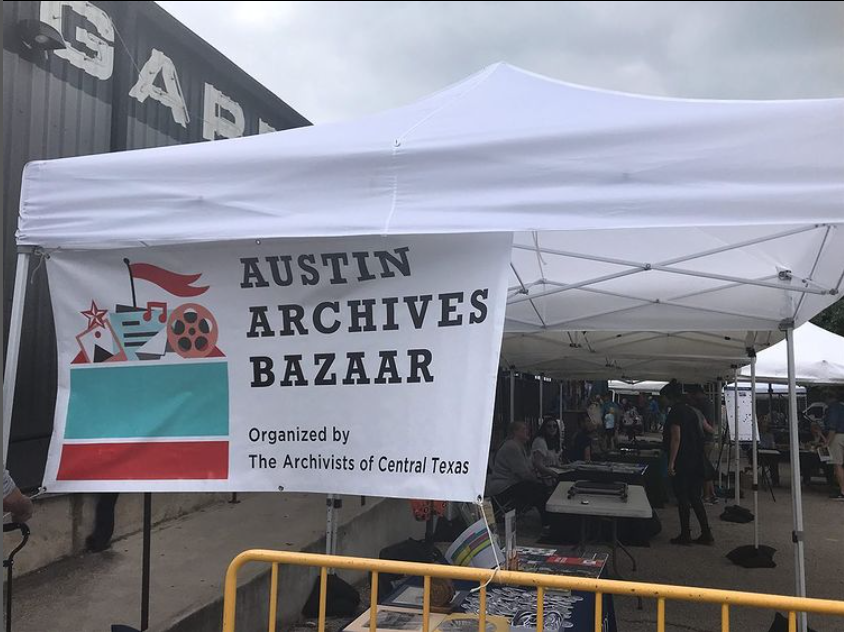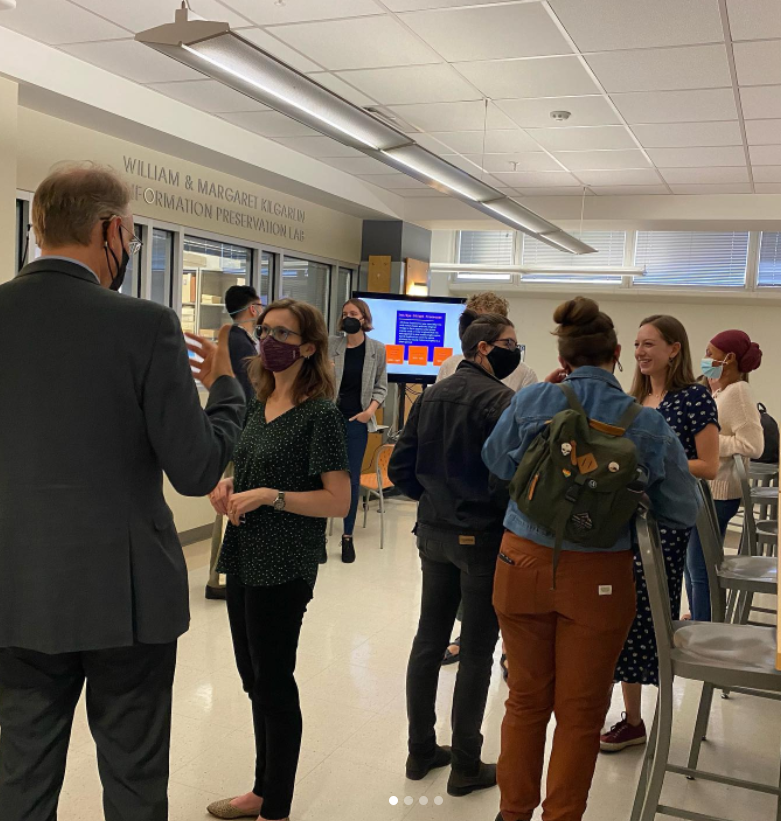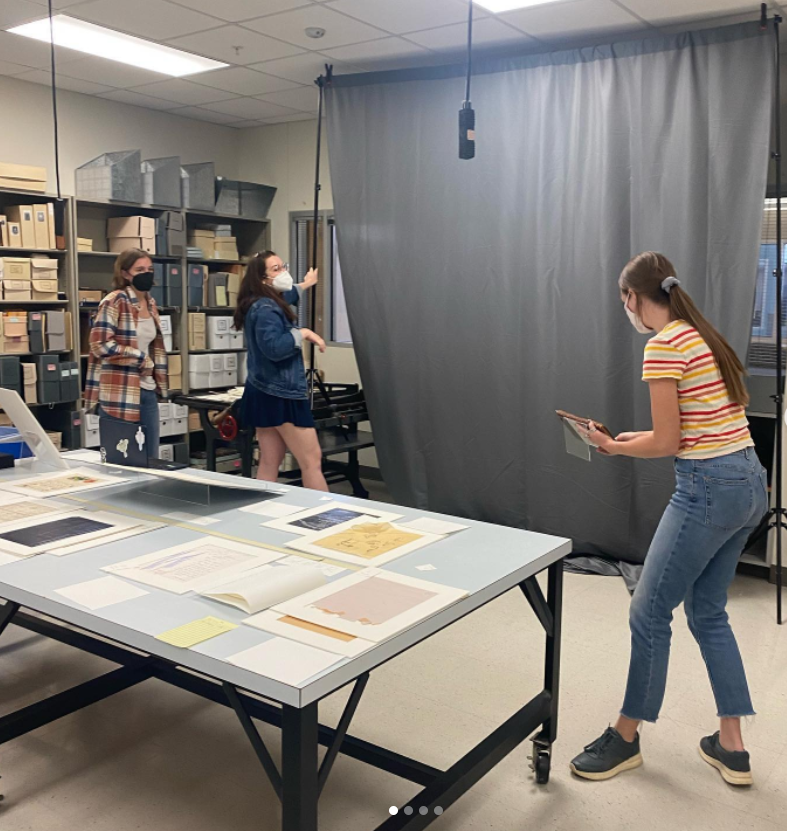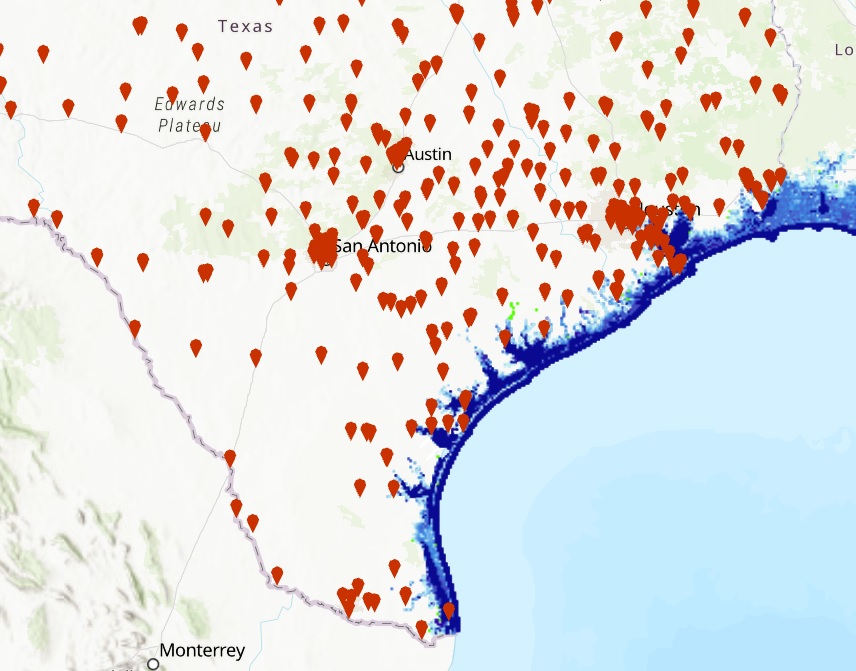Three cheers to the students in INF 386E, Planning and Understanding Exhibits, who successfully launched their class exhibit on paper dolls. Titled All Dolled Up: Playing with Identity in 1940s Paper Dolls, the exhibit explores issues of power and agency; identity and play; gender roles during wartime; and big-screen celebrity. Today’s opening reception featured 1940s-themed music, food, and dancing. The exhibit will be on display in the UTA building now through December 1, 2022. Many thanks to UT’s School of Human Ecology for the chance to work with this fascinating collection.
See our press coverage in Austin Monthly, CultureMap Austin, and Glasstire.
And be sure to also visit the exhibit online!
